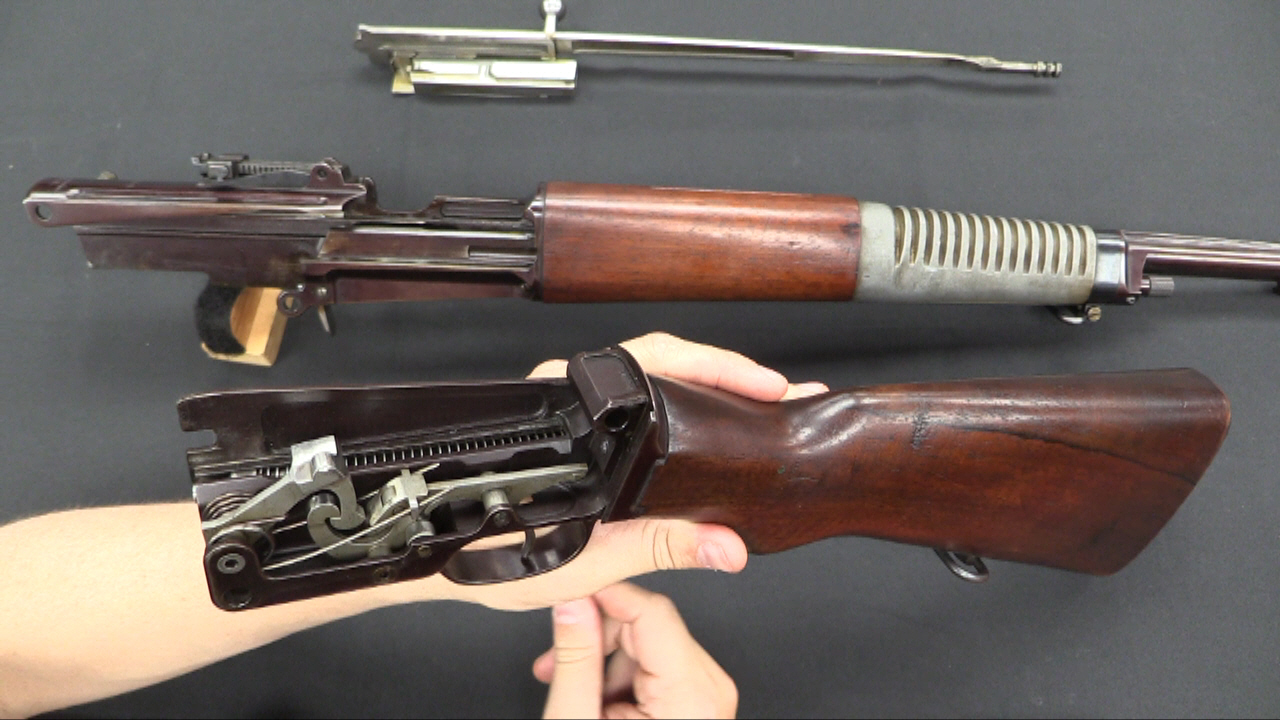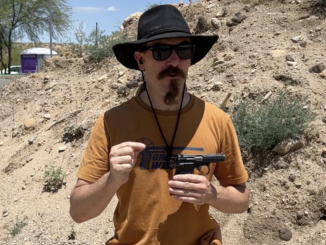The last batch of Mauser K98k rifles made by Brno after World War Two was a run in 1950 for East German border guards. These rifles have receivers marked “tgf 1950” in a style just like the wartime German arsenal codes, but where the codes were random letters, this one stands for “Tschekoslovakische Gewehr Fabrik” or Czechoslovak Rifle Factory in German. The rifles are very rare in the US, having remained in East Germany until the late 1970s, when a relationship developed between the new socialist government in Ethiopia and the DDR. A batch of the tgf 1950 Mausers was supplied to Ethiopia as military aid around this time.
Check out IO Inc’s web site for the Ethiopian arms they currently have for sale!




The Thank Goodness it’s Friday Mauser, lol.
DDR aid to the Ethiopian Derg regime:
http://lcweb2.loc.gov/cgi-bin/query/r?frd%2Fcstdy%3A%40field%28DOCID+et0179%29
Mengistu Haile Mariam of the Derg and Fidel Castro had a bromance in the late 1970s too. The Cuban Interior Ministry was training “popular militia” across the Gulf of Aden in Southern Yemen when Somali dictator Siad Barre decided to make use of his lavishly German, Romanian, Chinese, and Soviet-supplied army to hive off the eastern Ogaden since it was peopled primarily by Somalis of various clans, and Great Britain’s leaders had salved their guilty consciences after WWII by gifting portions of it to Haile Selassie.
Ultimately, the Cubans sent about 16k troops, largely artillery, and dropped everything in Southern Yemen to come to Mengistu’s aid vs. Barre. Some hapless Cuban soldier was held captive by the Somalis until 1991, by which time Somalia had collapsed into internecine civil war and famine and chaos. While the current rulers of Ethiopia would like to try Mengistu in court for very, very many heinous crimes, he lurks in exile in Zambia. Nevertheless, the Cuban contribution to preserving Ethiopia’s territorial integrity has ensured that there is a memorial to them in Addis Ababa: https://en.wikipedia.org/wiki/Tiglachin_Monument
I would not be surprised at all to learn–maybe right here at Forgotten Weapons?–that the Czechoslovak Model 52 7.62x45mm rifles that formed part of this IO cache out of the Horn of Africa emanated from Czechoslovakia by way of Cuba, since the Cuban Revolutionary state is known to have gifted these obsolete arms to one of its “mass organizations,” namely the MTT militia in Cuba, to the New Jewel movement in Grenada, to the FSLN in Nicaragua, and the MPLA/FAPLA in Angola too…
Oh dear. The LoC country study link about DDR aid to Ethiopia link doesn’t work?
Here is the content, again, from the Library of Congress 1991 Country Study:
Ethiopia
East Germany
Of all the East European nations that provided military assistance to Ethiopia, none played a more vital role than East Germany. Its importance to Addis Ababa derived not so much from its conventional military support, which at times was crucial to Ethiopian security, as from its involvement in Ethiopia’s intelligence and security services.
East Germany’s military relationship with the Mengistu regime started in 1977, when Socialist Unity Party of Germany leader Werner Lamberz visited Ethiopia three times (February, June, and December) to coordinate and direct the operations of the approximately 2,000 South Yemeni soldiers who were fighting against Somali forces in the Ogaden. East Germany also provided support to Soviet and Cuban pilots who flew helicopters and fighter-bombers on combat missions during the Ogaden War. Moreover, East Germany agreed to give ideological training to hundreds of Ethiopian officers. Even after the end of the Ogaden War, East Germany remained militarily active in Ethiopia. During the 1978 Ethiopian offensive against the EPLF, East German engineers, working in conjunction with their Soviet counterparts, reportedly built flanking roads, enabling Ethiopian tanks to come up behind EPLF lines. In addition, East German military advisers manned artillery and rocket units in Eritrea. Interestingly, in 1978 East Germany also sponsored unsuccessful peace talks between Ethiopia and the EPLF. When these discussions failed, the East German government abandoned diplomacy in favor of a military solution to the problem of Eritrean and Tigrayan separatism.
In May 1979, East Germany and Ethiopia signed an agreement formalizing military relations between the two countries. Then, on November 15, 1979, East German head of state Erich Honecker visited Ethiopia and signed a twenty-year Treaty of Friendship and Cooperation. In addition to calling for greater cooperation in politics, economics, trade, science, culture, and technology, the 1979 treaty also laid the groundwork for increased military assistance.
For most of the 1980s, East Germany, through its National People’s Army and its State Security Service, provided Ethiopia with diverse forms of military and intelligence assistance. Apart from military aid, such as automatic rifles, ammunition, artillery, and heavy vehicles, East Germany provided up to five months’ training in military and police tactics to members of the People’s Protection Brigades, which concentrated on routine police duties at the local level (see People’s Protection Brigades, this ch.). In 1982 East German intelligence advisers participated in that year’s Red Star campaign against Eritrean separatists. East German personnel often assumed control of Ethiopian army communications sites as, for instance, they did in mid-1988 in Asmera. In addition, East German security advisers reportedly acted as Mengistu’s personal bodyguard.
Even after the Soviet Union altered its policy toward Ethiopia in the late 1980s, East Germany remained Mengistu’s staunch ally. In mid-1989, for example, Honecker promised Mengistu fifty to sixty T-54/55 tanks that had been scheduled to be scrapped in a force reduction. However, after Honecker’s resignation and the emergence of a more broadly based government in late 1989, East German officials informed Addis Ababa that the military relationship between the two countries had been terminated and that all future arms deliveries had been canceled. In 1990 the 550 East German advisers and technicians stationed in Ethiopia were withdrawn. The end of the alliance between Ethiopia and East Germany further isolated the Mengistu regime and reduced the Ethiopian army’s ability to achieve a military solution in Eritrea and Tigray.
Data as of 1991
Thank you for the information.
I might also point out that the organs of state security in the nascent East German Democratic Republic included a “national people’s army” that initially used numbers of ex-Wehrmacht StG44s in 7.92×33 mm kurzpatrone, Kar98ks, and a typical assortment of Soviet late-WWII small arms: PPSh41 Shpagin SMGs, DP LMGs, Mosin-Nagant M44 carbines, etc. By the time Wiesa was producing the “KS” version of the SKS and eventually the Kalashnikov as MPiKM, etc. there were cases where the NVA had the Simonov carbine and the border guards and “peoples police” had Kar98ks, including, apparently, this kind.
The remnants of that pink (originally red?) macramé sling intrigue me. Did the rifle at some point belong to a goat farmer who used it to shoot jackals? Did he have the women in his household run it up out of store-bought yarn, or is it maybe traditionally died wool? It looks worn out from long service on the farm, that’s for sure. Damn, why can’t these guns talk?
I am afraid interpreting code “tgf” as standing for “Tschechoslowakische Gewehrfabrik” is a little over-interpreting. In Czechoslovakia the term has always been “Zbrojovka” which translates to “Waffenfabrik”. Gewehrfabrik is a typical term from Imperial Germany. It tgf had any meaning, it would realy be code twf.
It has no meaning, just like the other codes ayf, bxn, rid and so on which were introduced in 1952.
I am with you on this one: I’m also pretty sure it has nothing to do with German name for Czech factory. For instance, on vz.58 rifles was label “she”. What a heck that would translate into? Nothing, just a manufacturer’s code. The “bxn” code applies for ammunition.
But, I appreciate Ian’s effort at the earnest.
Just to make it even more intriguing…. on license plates we used to have, till mid 60s, three letter followed by two sets of two digits. Each 3 letter code meant region in which the vehicle was registered, yet it had no relation of region’s name. It was allegedly for reason of “state security”. Later on it was changed with short for a particular region.
Interesting that photos of Haile Selassie’s bodyguard in the 1930s show Czechoslovak M.30 steel helmets and the ZH-29 rifle. Postwar, allowing for Ian’s ongoing exposition of IO imported arms from Ethiopia and its very lengthy late unpleasantness, it would seem the pre-Communist Czechoslovak government re-extended channels of military sales to Ethiopia until the USA became the leading arms exporter to Ethiopia (M14s even! F105 jets!), followed by the precipitous complete shift toward the USSR by the Derg, and with it the support of East Germany and these weapons assembled in Tschechoslowakei.
I have this rifle (only in near immaculate condition), and if this info about the tgf marking is true, then it answers one of my outstanding questions.
Namely, how to tell the origin of a post-war Czech Mauser. I knew that the Czechs continued to make them after the war, for Africa, Israel and the DDR, but I had no way of knowing who mine was made for. I did know that mine was one of the last ones (tgf 1950), but not who it was made for. I had heard that DDR rifles had some sort of “sunburst” nark on them somewhere, but couldn’t find anything like that.
If what Ian said is correct, then the last production tgf 1950 guns WERE for the DDR, and the earlier leftovers with wartime markings were what went to Israel etc.
After the Communist take-over, Guatemala under the reformist Jacobo Árbenz government purchased Czechoslovak arms, which included a lot of Kar98ks, I think. The Guatemalan army, like many Latin American states, had acquired VZ24s and Mausers of various kinds before WWII. I think that the local forces created during the long counterinsurgency used a lot of Mauser bolt-actions, including presumably the arms in that shipment that served to legitimate the CIA’s orchestrated overthrow by Col. Castillo Armas in “PBSUCCESS” in 1954.
Cuba received Czechoslovak AA guns, HMGs, LMGs, rifles and SMGs by 1960-61. Later, it would seem that numbers of Kar98ks also went to Cuba, since the arm appears in the militia manuals produced in the early 1980s Reagan administration and the Cuban state’s adoption of “war of all the people” i.e. “do what North Vietnam does.” I’d assumed that these Kar98s must have been the so-called “Russian Capture” variety, but who knows? Perhaps some of these emanated from Czechoslovakia and/or the DDR too?